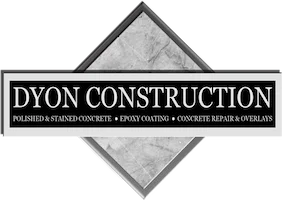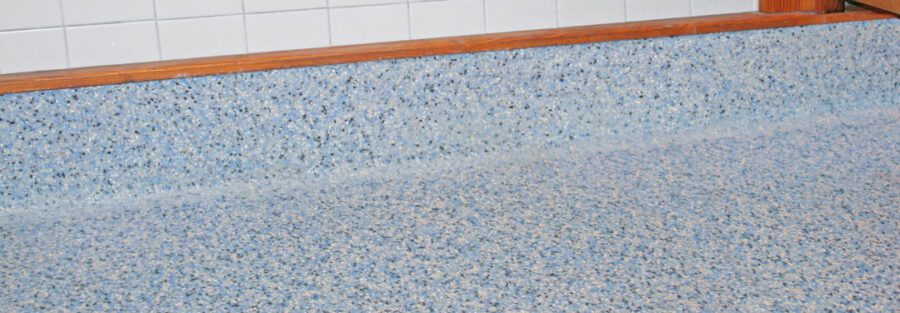Introduction
When outfitting a gym, the choice of flooring is paramount. It affects everything from safety and durability to aesthetics and maintenance. Two popular options are rubber flooring and epoxy flooring. Both offer distinct advantages and potential drawbacks. This article delves into the specifics of each, providing a comprehensive comparison to help you determine which is best for your gym.
Overview of Rubber Flooring
Rubber flooring is a versatile and resilient choice commonly found in gyms and fitness centers. It is typically made from recycled rubber tires, which contributes to its eco-friendliness. Available in rolls, tiles, and mats, rubber flooring offers various thicknesses and textures to suit different needs. Its primary appeal lies in its shock-absorbing properties, providing cushioning and reducing the risk of injury during high-impact activities. Rubber flooring also has sound-dampening qualities, making it ideal for noisy environments.
Overview of Epoxy Flooring
Epoxy flooring is a durable and visually appealing option created by applying a resin and hardener mixture to a concrete substrate. Once cured, this mixture forms a rigid plastic coating that adheres strongly to the concrete. Epoxy flooring is known for its seamless, high-gloss finish, which can be customized with various colors, patterns, and even embedded graphics. It is widely used in commercial and industrial settings due to its resistance to chemicals, stains, and abrasions. For gyms, epoxy flooring offers a sleek, professional look while providing a hard-wearing surface that can withstand heavy use.
Pros and Cons of Rubber Flooring
Pros
Rubber flooring has numerous benefits. Its shock-absorbent nature makes it perfect for high-impact activities like weightlifting and aerobic exercises, minimizing the risk of injuries. The cushioning effect also provides comfort for users, reducing fatigue during prolonged workouts. Rubber flooring’s sound-dampening properties are beneficial in a gym setting, helping to reduce noise levels and create a more pleasant environment. Additionally, it is highly resistant to water and stains, making it easy to clean and maintain. The slip-resistant surface enhances safety, especially in areas where sweat or water might create slippery conditions.
Cons
However, rubber flooring also has some drawbacks. The initial cost can be higher compared to other flooring options, particularly for high-quality materials. Over time, rubber can degrade, especially when exposed to direct sunlight, causing it to harden or crack. While it is generally easy to maintain, rubber flooring can be prone to staining from certain substances like oils or dyes. The strong odor of new rubber flooring can also be off-putting, though this typically diminishes over time.
Pros and Cons of Epoxy Flooring
Pros
Epoxy flooring offers a range of advantages that make it an attractive option for gyms. Its seamless, high-gloss finish creates a visually appealing and professional look. The surface is highly durable and resistant to wear and tear, making it suitable for areas with heavy foot traffic and equipment use. Epoxy flooring is also resistant to chemicals, stains, and water, which simplifies cleaning and maintenance. The customization options are extensive, allowing for the incorporation of logos, markings, or unique color schemes that can enhance the gym’s branding and aesthetics.
Cons
Despite its many benefits, epoxy flooring has some limitations. The installation process is complex and time-consuming, requiring professional expertise to ensure a proper application. Epoxy floors can become slippery when wet, posing a safety risk, though this can be mitigated with the addition of anti-slip additives. While durable, epoxy can crack or chip under heavy impact, and repairs can be costly and challenging. Additionally, the initial cost of installation can be higher compared to other flooring options, though the long-term durability may offset this expense.
Cost Comparison
When comparing costs, rubber flooring and epoxy flooring vary significantly. Rubber flooring generally has a higher upfront cost, especially for thicker and higher-quality materials. However, its ease of installation can reduce labor costs, and its longevity and low maintenance requirements can offer savings over time. Epoxy flooring, while potentially less expensive in material costs, often incurs higher labor costs due to the intricate installation process. The long-term durability of epoxy may result in lower maintenance costs, but initial investments can be substantial.
Durability and Safety
Durability and safety are crucial factors in gym flooring. Rubber flooring excels in both areas, providing excellent shock absorption and cushioning to protect users and equipment. Its slip-resistant surface enhances safety, particularly in wet conditions. Rubber flooring is also highly durable, able to withstand heavy impacts and frequent use without significant wear.
Epoxy flooring is also highly durable, capable of enduring heavy traffic and equipment without showing signs of wear. Its resistance to chemicals and stains adds to its longevity, making it a practical choice for gym environments. However, the potential for slipperiness when wet necessitates careful consideration and the possible addition of anti-slip coatings to ensure safety.
Aesthetic and Design Options
Aesthetic appeal and design versatility are important considerations for gym owners. Rubber flooring offers a range of colors and patterns, though it is generally more limited compared to epoxy flooring. Its primary appeal lies in its functional appearance and ability to create a comfortable, safe workout environment.
Epoxy flooring, on the other hand, provides extensive customization options. The seamless, high-gloss finish can be tailored with various colors, patterns, and embedded graphics to create a unique and professional look. This flexibility allows gym owners to enhance their brand identity and create visually striking spaces that motivate and inspire users.
Conclusion
Both rubber flooring and epoxy flooring offer distinct advantages for gym environments, each catering to different needs and preferences. Rubber flooring excels in shock absorption, safety, and ease of maintenance, making it ideal for high-impact activities and noise reduction. Epoxy flooring offers a sleek, durable, and customizable solution that enhances the aesthetic appeal of any gym. Ultimately, the choice between rubber and epoxy flooring will depend on your specific requirements, budget, and design goals. By carefully considering the pros and cons of each option, you can select the flooring that best meets your needs and enhances the overall gym experience.

